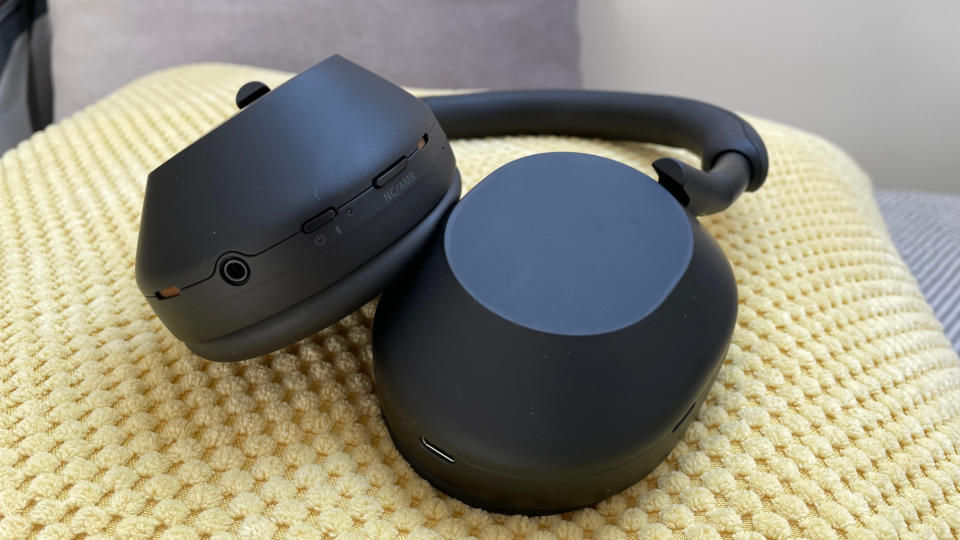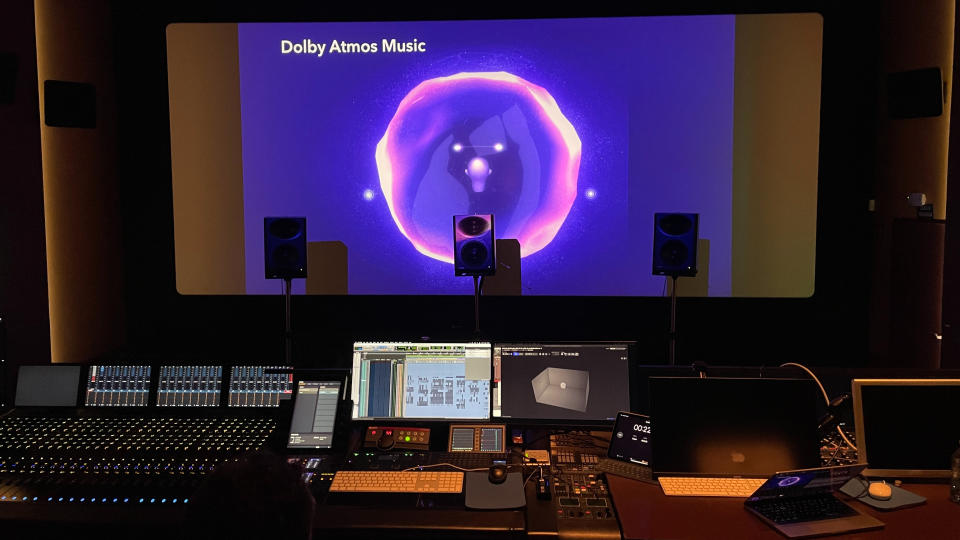Sony 360 Reality Audio: what is it? What headphones and speakers work with it?

Stereo and surround sound are fine and dandy, but what's the next big thing in consumer audio? Sony would like you to believe its 360 Reality Audio format is top of the list.
Sony is working with a number of major record labels (including Sony Music Entertainment, Universal Music Group and Warner Music Group), streaming services and other music organisations to refine a next-gen audio format that sits the listener smack bang in the middle of a 360-degree music listening experience.
But what exactly is Sony 360 Reality Audio? How does it work? And which products support it? You'll find all that information, and more, below.
What is Sony 360 Reality Audio?
Sony 360 Reality Audio is an audio format that uses Sony’s object-based spatial audio technology to deliver a full 360-degree audio experience. Its launch was one of Sony's key CES 2019 highlights, but the service has come a long way since then, with more streaming partners and compatible products announced.
Its aim? To make the listener feel like they’re right in the recording studio or at a live concert watching their favourite artist. This is especially timely given that around the world, music venues are currently closed due to the coronavirus pandemic.
The format has been built using the open MPEG-H 3D Audio standard, which itself has been optimised for music streaming. It supports up to 64 speaker channels and allows audio coding to be done in different ways.
Engineers can map out and place everything including vocals, individual instruments and a live audience in any position inside a 360 spherical space. Different parameters can be altered for various elements, including distances and angles.
Sony’s teamed up with the Fraunhofer IIS (Institute for Integrated circuits) to open the format up for content creators and artists to take advantage of. At CES 2021, it made two further announcements: it added video streaming capabilities to 360 Reality Audio, and it developed a new content creation software called the 360 Reality Audio Creative Suite.
Sony is also in talks with major music labels and streaming services about launching video streamed content. And there's also 360 Reality Audio Creative Suite plugin software (which is compatible with popular digital audio workstation) that was released at the end of January 2021.
How can you listen to music in Sony 360 Reality Audio?

To experience Sony 360 Reality Audio, you'll need the right kit and compatible software.
To experience 360 Reality Audio on a pair of headphones, you’ll first need to download the iOS/Android app for a compatible streaming service. At the moment, these are Tidal, Amazon Music HD and nugs.net.
In case you haven’t heard of it, nugs.net is a streaming service for live concerts. It currently has over 10,000 concerts in its catalogue including artists such as Bruce Springsteen and Red Hot Chili Peppers.
You used to have to subscribe to the premium tiers of Tidal and Amazon Music to enjoy tracks in 360 Reality Audio, but that's no longer the case since both platforms now offer the feature through their standard paid tiers.
Deezer launched '360 Sessions' to showcase Sony 360 Reality Audio back in June 2021, where the streaming service reformatted a number of live performances for subscribers to enjoy. However, Deezer stopped offering content in 360 Reality Audio in October 2022.

Sony claims that 360 Reality Audio can be experienced “using headphones from most manufacturers”. It's not exactly crystal clear what separates one pair of compatible headphones from a non-compatible pair, but Sony has been quick to highlight which of its own headphones will work on its official 360 Reality Audio site.
With select Sony models you can even use its Headphones Connect app to analyse your ear shape and help optimise the sound field for its new audio format. Open the app and you can scan both ears using your phone’s camera. The results are then applied to the app of your streaming service of choice.
Head to Sony’s site and you’ll be able to see a full list of compatible headphones, which include current What Hi-Fi? favourites (and Award-winning) WH-1000XM5, WH-1000XM4, their predecessors the WH-1000XM3, and the WF-1000XM5, WF-1000XM4 and WF-1000XM3 wireless earbuds, plus the WF-C700N, WF-C500, LinkBuds, LinkBuds S and wired, over-ear MDR-Z1R.
Sony even has a neckband speaker, the SRS-NS7 which also was the first such speaker with Dolby Atmos support.

Of course, you can listen to Sony 360 Reality Audio using speakers, too. Sony has two speakers that are compatible with the tech: the SRS-RA5000 and SRS-RA3000. They're both wireless models, with Bluetooth and wi-fi onboard, and can link up to create a multi-room system. The RA5000 is compatible with Hi-Res music files too, and they both support Immersive Audio Enhancement, which upscales stereo sound so it has a surround effect.
The tech is also available in Sony's premium soundbars, the five-star HT-A7000 and HT-A9 which both launched in July 2021. Sennheiser has also brought the tech to its Ambeo Soundbar Max, Ambeo Soundbar Plus and Ambeo Soundbar Mini.
Sony is also licensing the key technologies involved in 360 Reality Audio, meaning we should see more compatible devices come to market. In April 2021 it was suggested that Sony and Google could be joining forces to bring 360 Reality Audio to Android and make it compatible with more devices through the Android Open Source Project. However, at the time of writing, only select Sony smartphones are compatible with the format.
Several home cinema receivers, including models from Denon, Marantz and McIntosh, now support the tech, one of which is the five-star Denon AVC-X3800H.
What can you listen to in Sony 360 Reality Audio?

At present, you can stream over 1000 tracks in the format, including tunes from Mark Ronson, Pharrell Williams, Billy Joel and Jeff Beck.
Sony’s promising more tracks will be added via major record labels, plus over 100 songs recorded from live concerts, including the likes of CHARLI XCX and Kodaline.
Sony has also added video streaming to the format's skillset. The aim is to recreate the feel of a live gig. If you head over to the Sony 360 Reality Audio Live website you'll find a selection of live gigs available to stream in the format.
Which speakers and headphones support Sony 360 Reality Audio?

Besides headphones (and apps of compatible music streaming services), you can also experience Sony 360 Reality Audio on at least one speaker made by a third-party company: the Amazon Echo Studio wireless speaker (pictured above). However, you will need to be a subscriber to Amazon Music HD to take advantage.
The key to experiencing 360 Reality Audio in hardware, is that each product will need to have Sony’s custom decoder built-in. Sony has confirmed that it’s looking to make the new sound format available across a number of Alexa-enabled devices and those that support Chromecast built-in.
It’s also working with chipset manufacturers Media Tek, NXP Semiconductors and Qualcomm, so you can expect to see support for the format increase across more consumer kit moving forward.
Sony 360 Reality Audio vs Dolby Atmos Music vs Apple spatial audio

Now there just so happens to be another object-based audio tech in the offing from Dolby. Dolby Atmos Music is based on the company’s surround sound tech, Dolby Atmos, and allows engineers to either remix tracks and place sounds at specific points in your soundstage, or record live mixes in-studio, as long as they’ve got access to the necessary Dolby Atmos Music mixing kit.
Dolby Atmos Music tracks work on any home audio kit that supports Dolby Atmos, which does give this audio format an immediate advantage with TVs, soundbars, AV receivers, smartphones and tablets already geared up to support the format. Whether Dolby Atmos Music offers the same sort of 360-degree sound experience as Sony's offering is tricky to nail down as tracks available in Atmos don't tend to be available in 360 Reality Audio. But it's certainly an exciting time for music listeners, as streaming enters its third dimension.
Apple's proprietary spatial audio processing, meanwhile, takes 5.1, 7.1 and Atmos signals and applies directional audio filters, adjusting frequencies that each ear hears so that sounds can be moved around in 3D space. The idea is to recreate the audio experience of a cinema so it's more aimed at movies, although you can experience spatial audio via Apple Music, where tracks are powered by Atmos and can be heard through any pair of headphones.
MORE:
I spent 24 hours immersed in Dolby Atmos Music – these are 8 key things I learned
Listen up! Dolby Atmos Music: everything you need to know
Apple spatial audio: what is it? How do you get it? And is it like Dolby Atmos?
Find out Tidal vs Spotify – which is better?
These are the best music streaming services: free streams to hi-res audio
